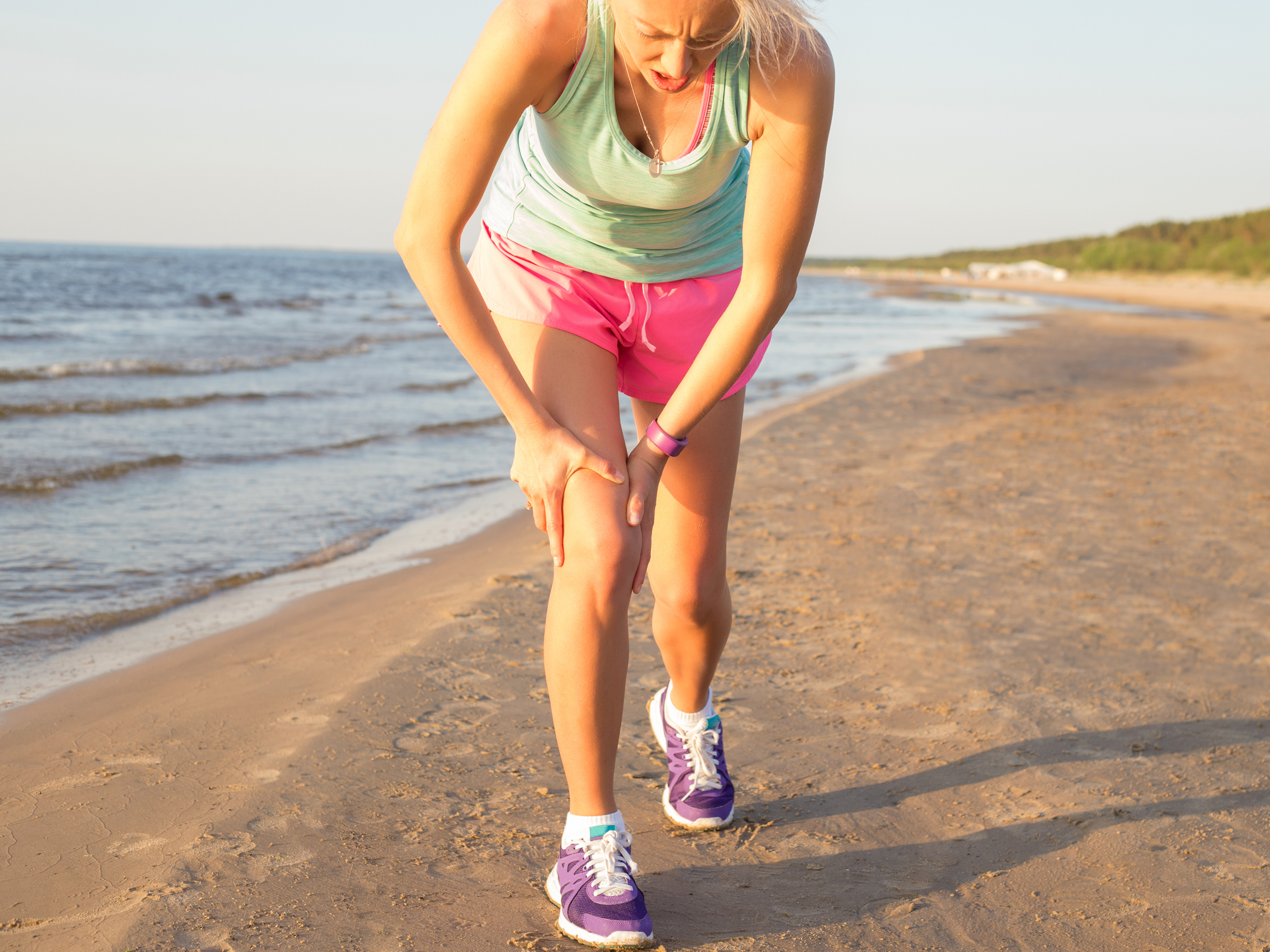Get Easy Health Digest™ in your inbox and don’t miss a thing when you subscribe today. Plus, get the free bonus report, Mother Nature’s Tips, Tricks and Remedies for Cholesterol, Blood Pressure & Blood Sugar as my way of saying welcome to the community!
Natural ways to stop painful muscle spasms or cramps

Muscle spasms are uncomfortable and when they linger, they are termed muscle cramps.
Spasms and cramps account for much of the daily chronic discomfort and pain we feel. There are many potential reasons for muscles to spasm and cramp and if left unchecked they can cause serious chronic pain and issues like limited range of motion, tingling and numbness, and a loss of vitality and ability to carry out certain activities.
Although they are more common than they should be, the good news is that most muscle spasms and muscle cramps can be relieved naturally…
Why muscles cramp or spasm
Note – to begin, while most cramping is episodic and not serious, this is not always the case. If you have tried the many solutions offered below to no avail you may want to have it looked at by a healthcare provider.
More common, however, are spasms and cramps resulting from our behaviors, postures and activities. These activities and dietary issues can cause chronic inflammation which restricts blood flow and the removal of toxins from the body. If you’re not familiar with the inflammation abomination you should read up on it.
Blood flow is also decreased via atherosclerosis — hardening and narrowing of the arteries due to plaque buildup.
Dehydration and electrolyte imbalance can also cause muscle cramping, especially among athletes. When people play sports in the heat, run long distances or work out in elevated temperatures or for extended periods of time, they lose electrolytes and fluids through sweating. As a result, dehydration and electrolyte imbalances occur that can trigger muscles to spasm and cramp.
Related: Stop! That pain reliever drains your life force
Chronic cramping in the chest, upper back, neck and arms — or numbness and tingling in the hands —could be a sign of thoracic outlet syndrome. This syndrome is caused by limited space in the thoracic outlet which compresses the brachial plexus or muscles, nerves and arteries. Basically, the space between the clavicle and first rib is too narrow and the nerves and artery are compressed, causing chronic issues.
But thoracic outlet is not the only reason for pinched nerves, which can also come from the neck or anywhere along the spine, causing muscles to spasm in the back, arms and legs. Poor sleeping, standing and sitting posture is a major culprit in this case.
Preventive measures
The best medicine is always found in prevention. With the above information in mind, some of the best preventive measures are easily accomplished by being mindful of your diet, thoughts and activities…
Diet plays such a vital role in our health and wellness, and also in the promotion of inflammation and disease. Drinking enough water each day so that your urine runs clear is a great way to stay hydrated and prevent dehydration. The more you exercise and sweat, the more water you need.
I often suggest taking a multi-vitamin or a supplement that contains sodium, potassium and magnesium to help prevent electrolyte depletion. You can also add electrolyte drops to your water and not have to take the supplements. Be sure, though, that you keep your body in an alkaline state. You can learn more about electrolytes and pH (acid/alkaline states) by reading my post on how to power-up your body’s energy grid.
[youtube https://www.youtube.com/watch?v=JNaM1fnTzKA]
Poor circulation and muscle strain can be prevented in part by properly warming-up your body before exercise. Jumping jacks, squats, and jogging in place or jumping on a rebounder all do wonders at raising body temperature and getting the blood flowing.
Taking some time to first move your joints through their range of motion and then doing 10 minutes of easy stretching are also terrific ways to get the joints and muscle ready for an activity. And when you’ve done your workout or daily walk, you should engage in deeper stretching since the muscles are warmed up and the blood is circulating well. This helps restore tissue length and prevent cramping as your muscles cool.
Reducing stress is also important when it comes to preventing muscle spasms. People often don’t realize that the chronic tension they feel in the neck and shoulders and low back are caused by psychological and emotional stress. It is said that the body lives in the past. This means that the chronic tensions and pains we feel are often the result of past events that we hold in our minds and cells. Emotional trauma and psychological stress from work and various social settings can get lodged in the body and spasm muscles. You can grab some tips here.
Rolling on a foam roller or tennis ball are other ways to work out muscle spasms and cramps. They are gentle yet also firm so they allow for compression of tight muscle tissue without fear of bruising or injury.
Taking hot showers, getting massages, ample rest after exertion, meditating and applying topical pain creams can help you naturally reduce spasms and cramps too.
Conclusion
Oftentimes, muscles cramp or go into spasm because of what we don’t do and because of what we do. Correcting our physical postures, warming up and stretching before and after activities, eating well, sleeping well, and making sure we are hydrated and have plenty of electrolytes will go a long way to preventing muscle spasms and cramps. And when we do experience these, if hot showers and stretching and rolling on balls and using topical creams does not reduce the inflammation and spasm, making an appointment for a massage or other bodywork therapy will help greatly.












